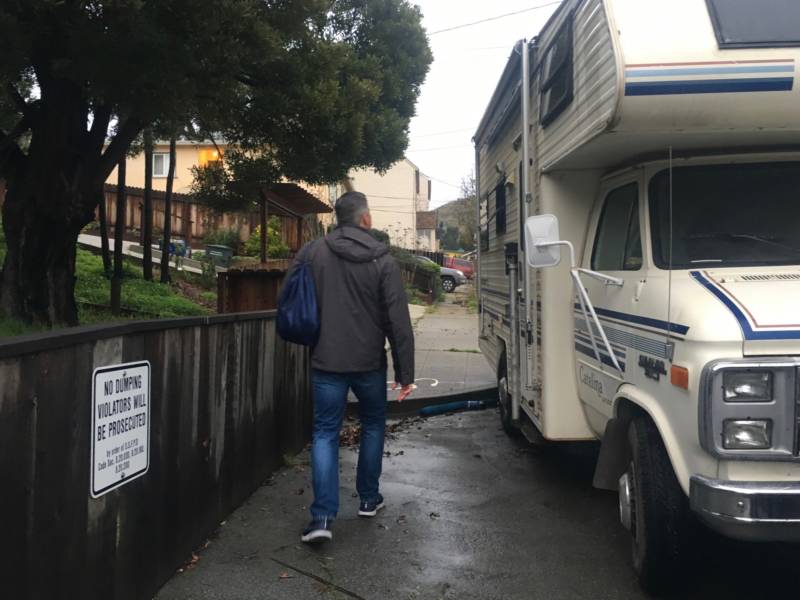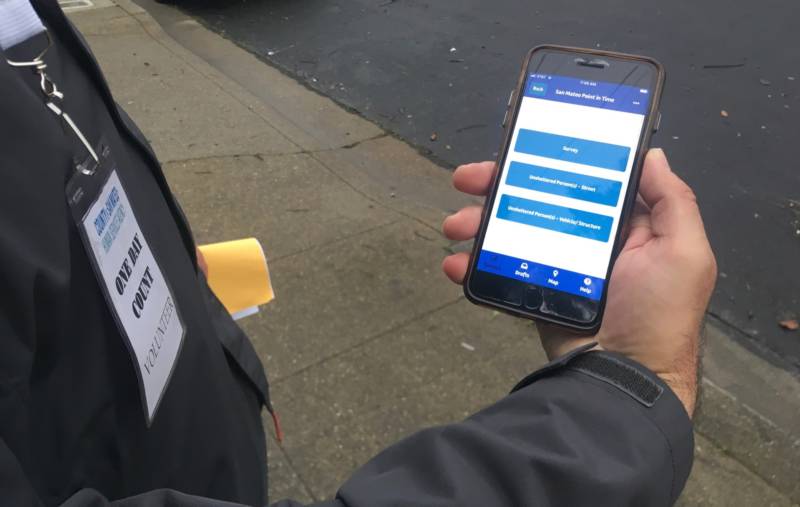On Thursday, 300 volunteers across San Mateo County came out in the rain—arriving at 5 a.m. at places like Safe Harbor House in South San Francisco—to help put together this year’s point-in-time homeless count.
Volunteers were divided into groups, and spent the day walking and driving along U.S. Census tracts, taking care not to disturb people who appeared to be sleeping. The goal was simply to count the individuals supine on the streets, underestimating if the number of people seemed unclear from a distance.
If volunteers found someone awake and willing to talk, they were allowed ask a series of survey questions, aimed at understanding how the homeless people became homeless, and what they might need to get housed.
While the individuals counted in these surveys stay anonymous, the information gathered is used to determine the resources that San Mateo County receives to help with homeless services, and to aid the U.S. Department of Housing and Urban Development (HUD) in developing a clear, data-driven snapshot of the national population. The report from the 2019 count will come out later this year—likely in June.
I set out to learn about the process with Melissa Liotti, a case worker at the non-profit Abode Services, and Ed Kiryczun of San Mateo County’s Human Services Agency.

“Understanding the population is the first step to helping the population,” said Kirycuzuno, a veteran himself.

